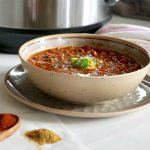Sushi lovers, it’s time to roll up your sleeves and get sushi-ready!
Whether you’re a sushi pro or a complete beginner, this Kappa Maki recipe is the only one you’ll ever need. And the best part is, you don’t have to leave the comfort of your own home to enjoy your favorite food.

In this article, we’ll take you through a step-by-step guide on how to make Kappa Maki or cucumber roll, from the history and cultural significance of this dish to the ingredients and equipment you’ll need, to the tips and tricks for making it perfectly every time.
So, get ready to impress your friends and family with your sushi-making skills!
What Is Kappa Maki?
Kappa Maki is a type of sushi roll made with cucumber, wrapped in nori seaweed, and often served with a side of soy sauce, wasabi, or pickled ginger. It is a very traditional and popular type of sushi in Japan beloved for its simplicity and delicious taste.
Unlike some other types of sushi, the cucumber sushi roll doesn’t contain any fish or meat, making it a great option for vegetarians or anyone looking for a light and refreshing dish.
The cucumber provides a nice crunch and a cool, refreshing taste, while the sushi rice adds a slightly sweet and savory flavor.
History and Cultural Significance of Kappa Maki
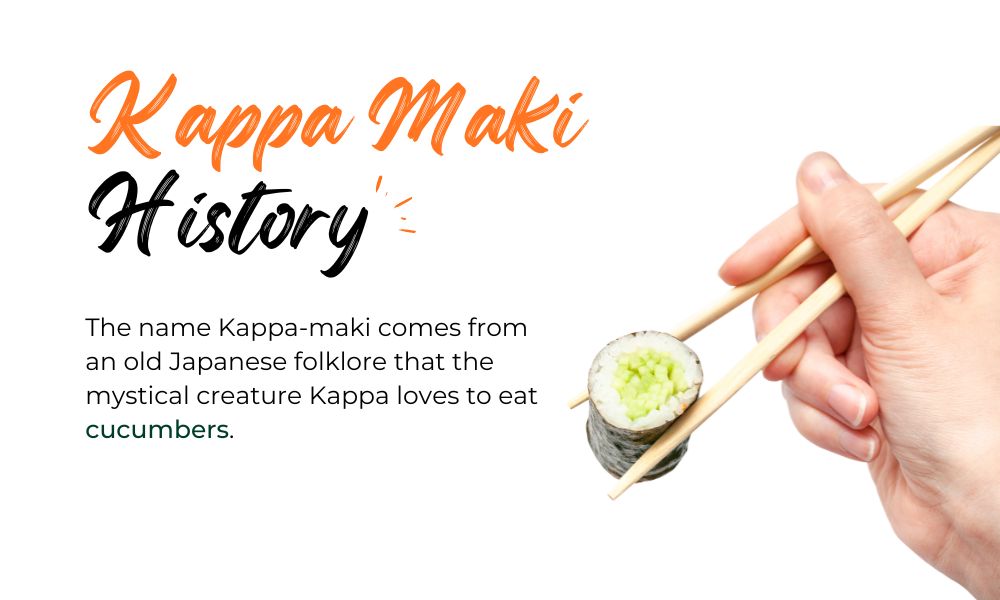
Cucumber rolls, also known as Kappa-maki, are a popular dish at sushi restaurants.
The term Kappa is often used as a shorthand for cucumber, but it is not widely understood to mean cucumber outside of sushi places. ‘Kyuri’ is the direct translation of cucumber in Japanese.
The name Kappa-maki comes from an old Japanese folklore that the mystical creature Kappa loves to eat cucumbers. This belief is also connected to the fact that cucumbers and eggplants are often used as offerings at summer festivals at shrines.
Kappa is often believed to be a manifestation of the water deity due to the strong association between summer celebrations and weather disasters like wind and flood damage.
The cut end of the cucumber also resembles the head of a Kappa.
Furthermore, in the Edo-style sushi eateries, the fast-paced service and quick delivery of dishes, the word cucumber rolls take too long to say for a sushi chef, thus they use the shorter and punchier Kappa.
However, the exact reason why the cucumber roll is called Kappa maki is uncertain.
According to some sources, the originator of cucumber rolls was Hiroshi Yasui (the 4th at Yahatazushi), who due to food shortages after WWII, tried rolling small cucumbers. He couldn’t find any other toppings!
This was the beginning of those sushi rolls, and it appears that the name Kappa-maki was adopted over time by the mass people.
What You’ll Need to Prepare Cucumber Roll
Let’s get down to business now. Here’s a quick rundown of the items and ingredients you’ll need to make the cucumber sushi roll:
Ingredients
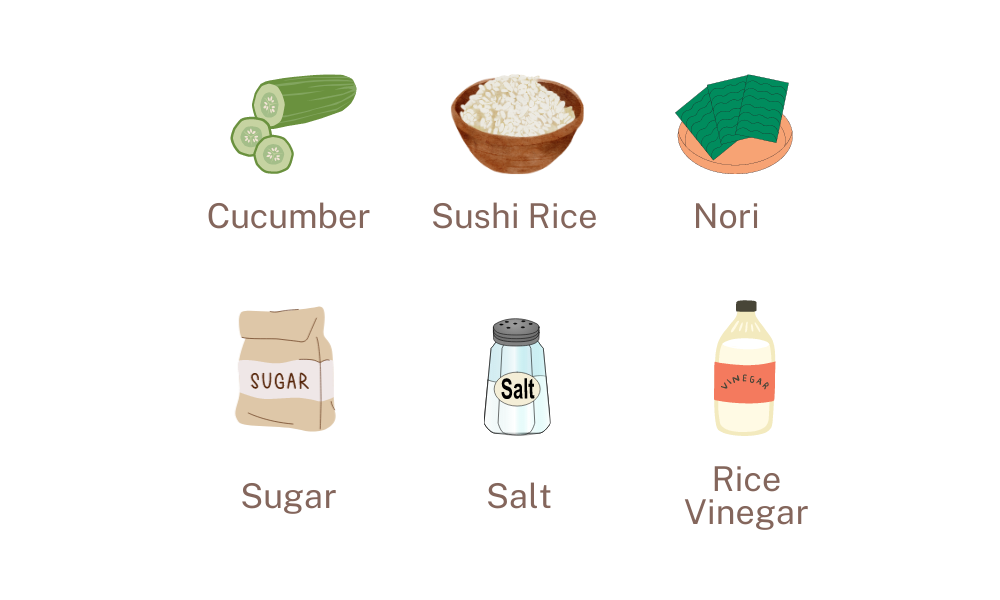
To make Kappa Maki sushi rolls, you only need three simple and healthy primary ingredients: cucumber, sushi rice, and nori.
You’ll also need:
- Rice vinegar
- Sugar
- Salt
These ingredients come together to create a delicious and magical combination in the Sushi rolls! If you’ve never made sushi before, don’t worry, it’s easy to learn how to make sticky rice.
🥒 Which Cucumbers to Use for Sushi Rolls?
When making the cucumber sushi rolls, it’s best to use Japanese cucumbers instead of English cucumbers, which are traditionally used for this dish.
They’re light, slightly sweet, and crisp, which makes them perfect for Kappa Maki sushi. You can usually find them at Japanese supermarkets.
However, if you can’t find them, you can use Lebanese cucumbers or Persian cucumbers as a substitute. They have a similar size, texture, and flavor to Japanese cucumbers.
Where to Buy Nori?
Nori is a type of dried seaweed that is dried and roasted. It comes in thin sheets that look like paper.
You can easily find it at Japanese supermarkets or on online platforms like Amazon.
For this cucumber maki recipe, we will be making eight sushi rolls and each nori sheet should be about 4×8 inches in size.
If your nori sheets are larger, you can cut them down to that size. To keep the nori sheet shiny and fresh, you can store it in a Ziploc bag and keep it in the freezer after opening the package.
🍙 How to Make Sushi Rice?
Sushi rice is a special type of vinegared rice that is made by combining Japanese rice (short-grain), rice vinegar, and sugar.
It’s actually quite easy to make, and once you learn how to make it, you can create your own sushi roll recipes very easily.
Equipment
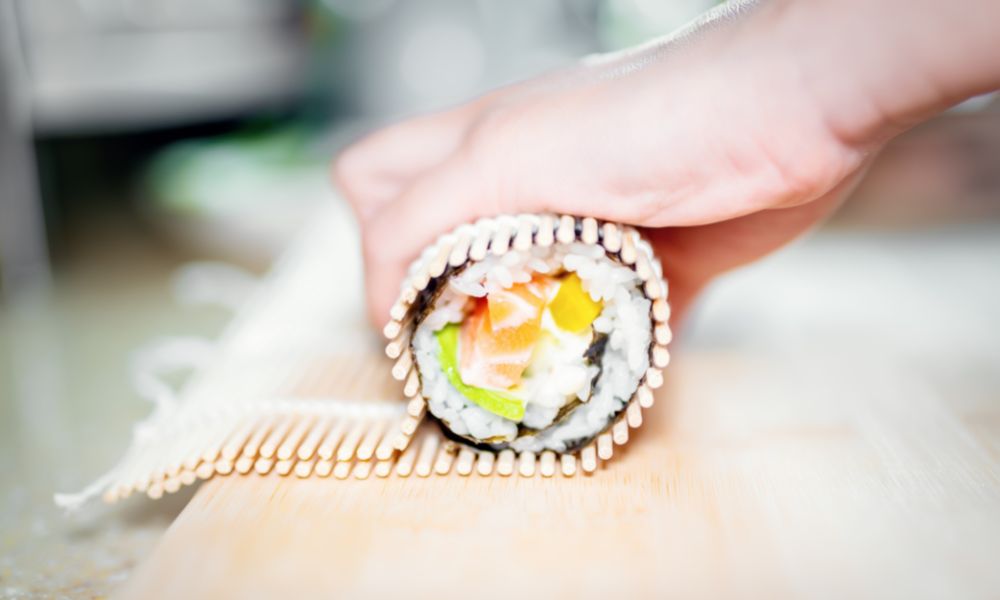
One of the most helpful tools for making Kappa roll is a rolling bamboo mat. You can also find them easily on Amazon.
While it is not strictly necessary, using a sushi mat will make it much easier to roll your cucumber sushi roll neatly and evenly.
They’re also inexpensive, so it’s worth investing in one if you want to perfect your sushi rolling skills!
If you don’t have a sushi bamboo mat, you can also use cling film (saran wrap) on top of a clean tea towel.
It’s important to note that the quality of the ingredients you use will greatly affect the final kappa roll (cucumber sushi) dish. Try to use the freshest ingredients possible for sushi recipes.
Step-by-Step Instructions
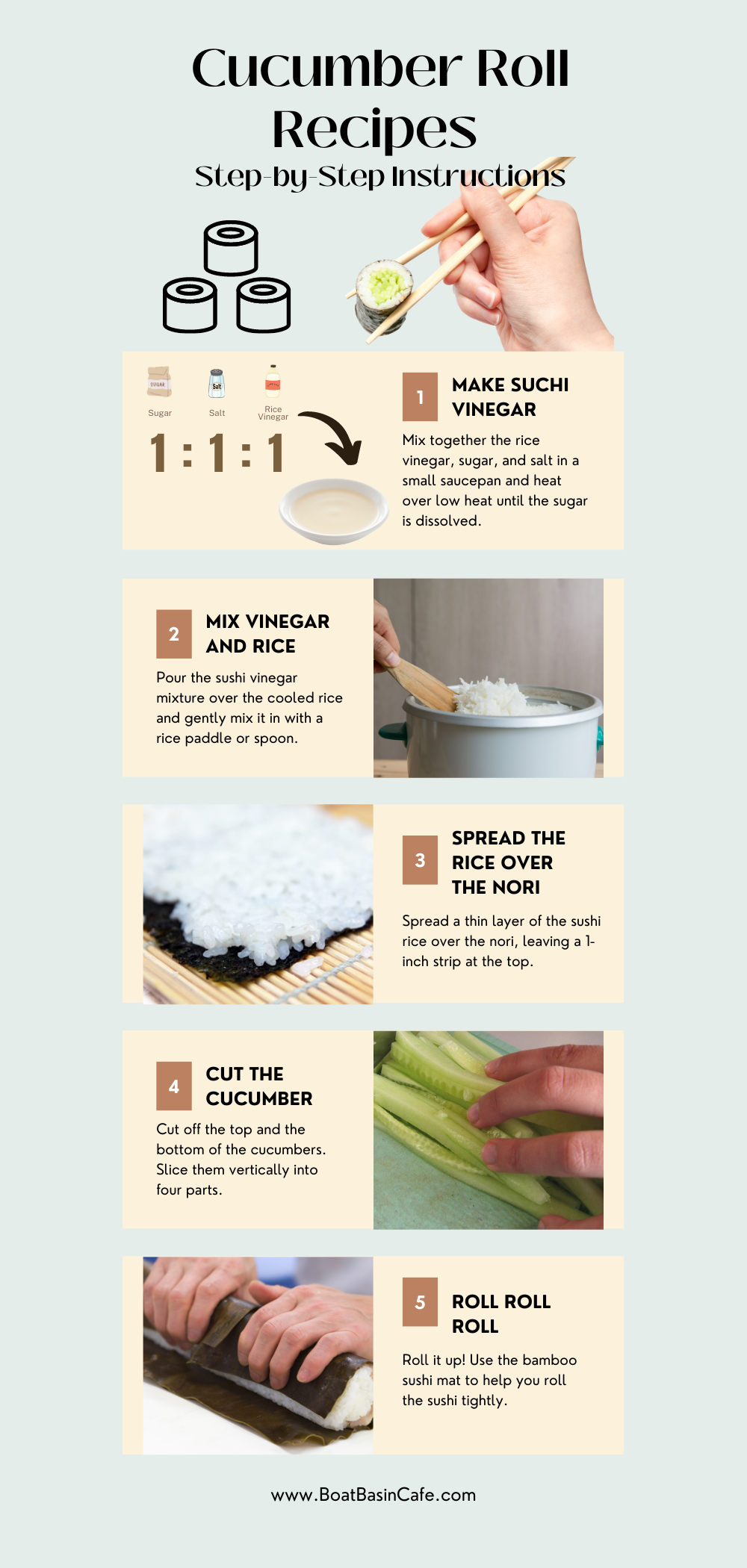
Step 1
Cook the sushi rice according to the package instructions and let it cool.
Step 2
Mix together the rice vinegar, sugar, and salt in a small saucepan and heat over low heat until the sugar is dissolved.
This mixture is called “sushi vinegar” and it is used to season the cooked rice.
The ratio of rice vinegar to sugar and salt is important, as it affects the taste and texture of sushi rice.
You can adjust the ratio to your liking, but a common ratio is 1:1:1.
Step 3
Pour the sushi vinegar mixture over the cooled rice and gently mix it in with a rice paddle or spoon.
Make sure the rice is evenly coated with the sushi vinegar.
Step 4
Take a sheet of nori seaweed and place it shiny side down on the sushi rolling mat.
Do this on a flat surface, preferably on a chopping board.
Step 5
Spread a thin layer of the sushi rice over the nori, leaving a 1-inch strip at the top.
It’s important to spread the rice evenly over the nori sheets, as it will affect the final outcome of the Kappa Maki.
Step 6
Now, cut off the top and the bottom of the cucumbers. Slice them vertically into four parts.
To remove the seeds, you can cut them out lengthwise with a Japanese sushi knife. This helps to keep the cucumber crunchy and fresh.
Place them on top of the rice. Make sure the cucumber slices are evenly distributed over the rice.
Step 7
Roll it up! Use the bamboo sushi mat to help you roll the sushi tightly.
Start with the end closest to you and roll it away from you, using the mat to shape and compress the sushi rolls.
It’s important to roll it tightly, as it will affect the texture and shape of the Kappa Maki.
Step 8
Slice the thin sushi roll into bite-size pieces and serve. You can use a sharp knife, and make sure to wipe the knife clean between each cut for a cleaner cut.
Congratulations, you’ve just made Kappa Maki! And let me tell you, it’s delicious. The combination of seasoned sushi rice, crunchy cucumber, and seaweed wrapper creates a unique and satisfying taste and texture.
Variations and Pairings
Kappa Maki can be made with different types of fillings such as avocado, shrimp, or crab meat and sushi toppings like tobiko.
These variations create different tastes and textures, and you can experiment with different fillings to find your favorite.
To make Kappa Maki with shrimp or crab meat, cook the shrimp or crab meat first, then slice it into thin strips before placing it on top of the cucumber before rolling.
If you’re looking for vegetarian-friendly types of Maki, there are a few options to choose from such as:
- Umekyu Maki (made with cucumber and pickled plum)
- Kanpyo Maki (made with calabash gourd)
- Gobo Maki (made with burdock root)
How to Properly Store and Serve Kappa Maki?
Kappa Maki is best enjoyed fresh and immediately after it’s made. However, if you have leftovers, you can store them in the fridge for up to 24 hours.
To reheat Kappa Maki, you can gently warm it up in the microwave or a steamer.
Read this more detailed guide on freezing sushi rolls if you often have leftovers in the kitchen.
When it comes to serving Kappa Maki, it’s best to follow the Japanese restaurant style.
Place the Kappa Maki rolls on a plate and serve them with soy sauce and wasabi (Japanese spicy green paste). If you have pickled sushi ginger, you can add a few pieces next to the rolls.
This vinegary pickled ginger is usually served at sushi eateries.
To enjoy Kappa Maki, you should scoop up a small amount of wasabi with your chopsticks and place it on top of the roll, then pick up the roll with chopsticks and dip it lightly in soy sauce.
The combination of the fresh and crunchy cucumber with a bit of wasabi spiciness and sushi nori creates a perfect harmony.
Kappa Sushi Roll Calories and Nutrition Information
Kappa Maki is considered a relatively low-calorie dish, as it is primarily made of cucumber and rice.
A typical serving of Kappa Maki, which is about 6 pieces, contains around 130 calories, 35 grams of carbohydrates, and no fat or protein, according to MyFitnessPal. Most of the calories come from rice.
However, the calorie count can vary depending on the fillings and toppings used, as well as the portion size.
For example, if Kappa Maki is made with avocado, the calorie count will be higher due to the added fat content.
In general, Kappa Maki is a good source of dietary fiber, vitamin C, minerals, and vitamin K. It also has other beneficial nutrients and minerals.
A small downside to Kappa Maki is the sodium content from the rice vinegar, which is present in most sushi rolls. Nori, the seaweed wrapper, also has a moderate amount of sodium.
However, that allows you to get creative with your fillings and pairings, the possibilities are endless. Happy sushi rolling!
Frequently Asked Questions
Can I use other types of vegetables for Kappa Maki?
Kappa Maki is typically made with cucumber, but you can experiment with other types of vegetables such as bell peppers, carrots, or radishes. Just make sure to slice them thinly and evenly for the best texture and taste.
Can I use regular white rice instead of sushi rice?
While regular white rice can be used, sushi rice is preferred as it has a higher starch content and a stickier texture which is perfect for rolling kappa maki. It also has a specific seasoning which is sushi vinegar, that gives it a unique taste.
How do you peel cucumbers for rolling?
To peel cucumbers for rolling, first cut off the head and the bottom of the cucumber. Then, cut the cucumber vertically into half or four pieces. Next, remove the seeds by cutting them out lengthwise with a knife. This process helps to keep the half cucumbers crunchy and fresh for rolling.



